What is a Digital Product Passport (DPP)
A digital product passport (also known as a DPP) is a structured digital record that holds detailed product information. It covers the whole life of the product, and it’s designed to improve traceability, transparency and sustainability.
The idea is that anyone who uses the product, from retailers and consumers to second owners and recyclers, can quickly and easily access information to help them make informed decisions.
Digital product passports are important to the European Union’s sustainability and circular economy strategies. They’re a key part of the Ecodesign for Sustainable Products Regulation (ESPR), which launched in 2024.
Right now, the EU is the only authority that requires digital product passports. But they’re getting more popular globally, so it’s only a matter of time before the rest of the world catches up.
If your business sells goods in the EU, you’ll be legally required to provide digital passports across some categories, such as batteries, toys, furniture and apparel by 2027. All product categories need DPPs by 2033. The rest of the world is expected to follow soon. Starting to introduce digital product passports now, along with related systems like Product Lifecycle Management (PLM), is an important step towards compliance.
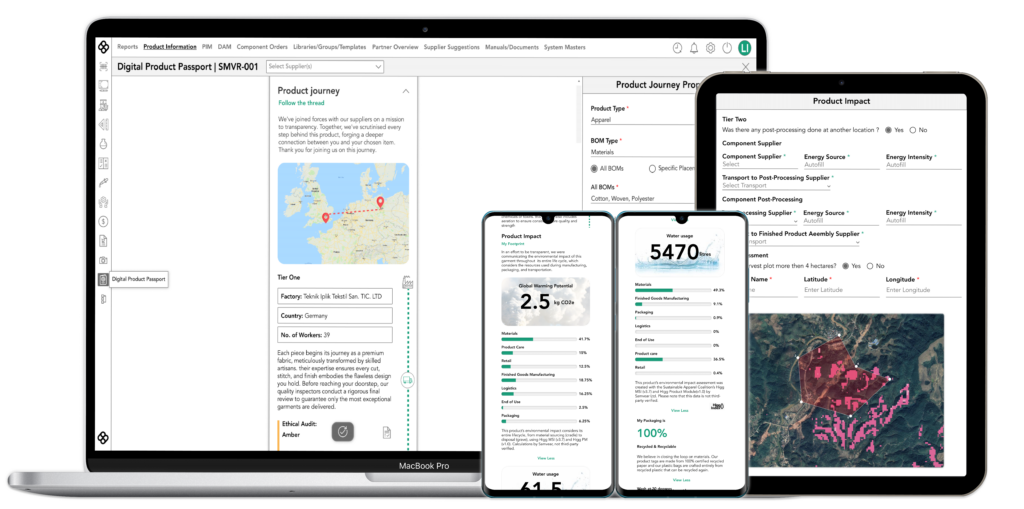
How does a digital product passport work?
All the data lives on a cloud server. It can be accessed by scanning a code printed somewhere on the product, on its care label or tag, or on its packaging. But it’s actually a bit more complicated than that. Let’s have a look at some of the key features, and why they’re important.

How is a digital product passport accessed?
A product with a digital passport has a unique identifier. This could be a barcode, a QR code or an RFID tag that can be scanned to access the product’s passport page.
Manufacturers can also provide direct access to passports online by linking to them directly from the product’s listing page.

Where are they stored?
Digital product passports are stored as web pages online. That means they can be accessed by anyone with internet access. Manufacturers have to make sure that passports are available for the expected lifetime of the product, and at least one backup has to be available.
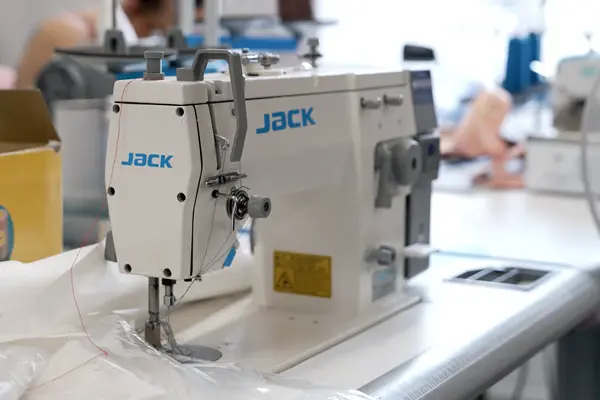
Can anyone access a digital product passport?
Anyone can scan the code on a product and access its passport, but that doesn’t necessarily mean they’ll be able to see all the data. For example, a basic product description and recycling information might be publicly available, but detailed compliance information might require a specific login.
This is because digital product passports use differentiated permissions, which let manufacturers set different levels of access for different users. It makes them a useful tool for manufacturers, who can use them to share different levels of data with different stakeholders.

Is it secure?
Digital product passports can be set up in different ways, with varying levels of security. But there are plenty of established security measures, such as data encryption, that can be used to make sure data is both safe and accurate.

How accurate are digital product passports?
The EU DPP regulation says that by 2033 every product must have its own passport. Some products must be compliant earlier (see chart below). The DPP must include detailed information about its supply chain, water consumption and carbon footprint. That means that if there are any changes to the supply chain or the manufacturing process, the passport must be updated.
So that means the data in digital product passports needs to be up to date and immediately available.

How is a digital product passport accessed?
A product with a digital passport has a unique identifier. This could be a barcode, a QR code or an RFID tag that can be scanned to access the product’s passport page.
Manufacturers can also provide direct access to passports online by linking to them directly from the product’s listing page.
Where are they stored?
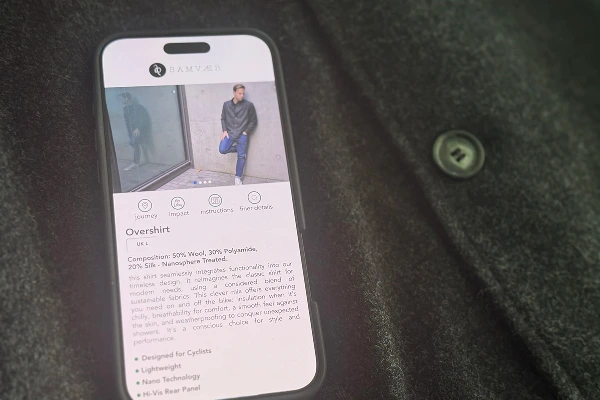
Digital product passports are stored as web pages online. That means they can be accessed by anyone with internet access. Manufacturers have to make sure that passports are available for the expected lifetime of the product, and at least one backup has to be available.
Is it secure?

Digital product passports can be set up in different ways, with varying levels of security. But there are plenty of established security measures, such as data encryption, that can be used to make sure data is both safe and accurate.

How accurate are digital product passports?
The EU DPP regulation says that by 2033 every product must have its own passport. Some products must be compliant earlier (see chart below). The DPP must include detailed information about its supply chain, water consumption and carbon footprint. That means that if there are any changes to the supply chain or the manufacturing process, the passport must be updated.
So that means the data in digital product passports needs to be up to date and immediately available.

Can anyone access a digital product passport?
Anyone can scan the code on a product and access its passport, but that doesn’t necessarily mean they’ll be able to see all the data. For example, a basic product description and recycling information might be publicly available, but detailed compliance information might require a specific login.
This is because digital product passports use differentiated permissions, which let manufacturers set different levels of access for different users. It makes them a useful tool for manufacturers, who can use them to share different levels of data with different stakeholders.
What data does a digital product passport include?
The ESPR says that, by 2033 every digital product passport should include the core data listed below. Brands, manufacturers and suppliers can choose to add additional product data that will help the consumer’s understanding of the product journey, help with buying decisions and encourage better end of use processing.
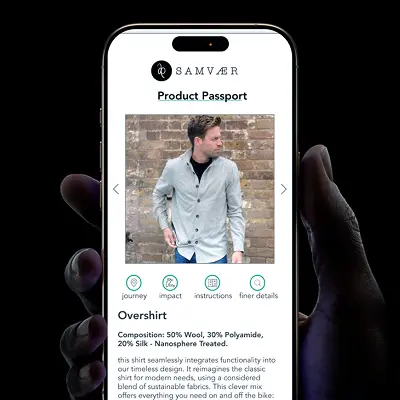
Part of the reason behind the EU’s decision to make digital product passports a legal requirement is to help create a circular economy, which reduces waste and improves sustainability.
So the DPP has to include a detailed analysis of the product’s environmental impact, and information about strategies to reduce its effects. It can also include information about the manufacturer’s sustainability programmes.
This includes the company name, location, contact details and logo.

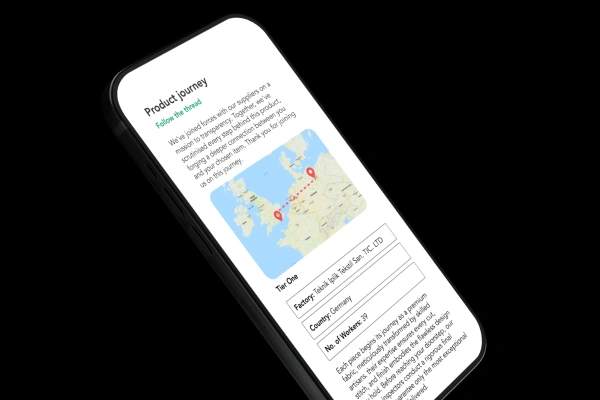
A core part of the digital product passport is a list of all the materials used in the product, including their origins and characteristics. It should also document the production process and list any quality standards, like ISO and CE.
A digital product passport has to include a detailed breakdown of the product’s supply chain, from raw materials to the consumer. It should have details on all the different stages, and the companies and organisations involved.
It also needs details on the production location, including the specific facility the product was made at and a report on the product’s environmental impact. This includes things like carbon footprint, energy and water use and anything else relevant.
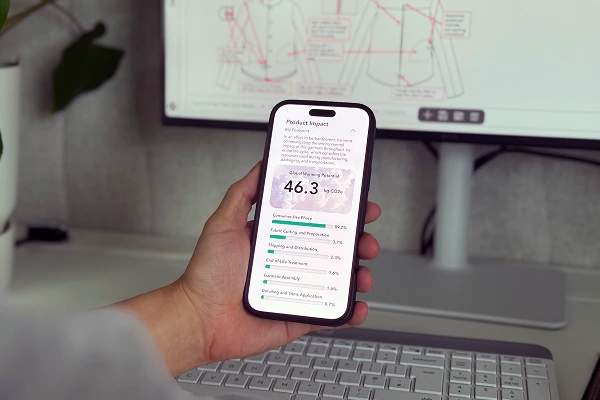

The DPP needs to include details of any certifications the product has. These include safety, environmental and ethical certifications.
Details of a product’s whole journey – from raw material to shop shelves – has to be included in the digital product passport, in the form of a detailed movement log.
There should also be a section for product recalls, so the user can easily see whether these have been completed.

Details of a product’s whole journey – from raw material to shop shelves – has to be included in the digital product passport, in the form of a detailed movement log.
There should also be a section for product recalls, so the user can easily see whether these have been completed.

Disposal instructions are included in a digital product passport so the product can be disposed of properly at the end of its life. It should also have details of how the product can be recycled, including collection points and product-specific recycling programmes.
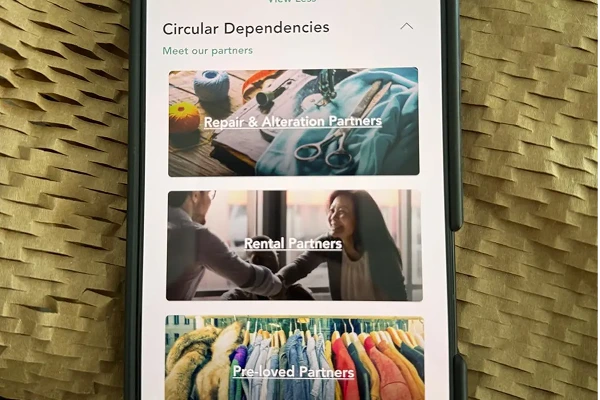
What are the benefits of digital product passports?
The biggest benefit of digital product passports is for the environment. They make it much easier to manufacture, distribute and recycle products sustainably. But there are some big benefits for businesses and consumers, too.
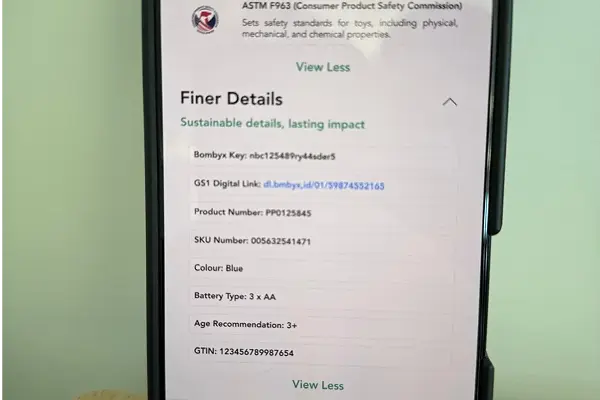
Transparency and traceability
A digital passport lets anyone quickly and easily see clear, verifiable data about the product. That means a customer can check out how sustainable a skirt is in a shop, or a regulator can easily access certification information.

A step towards a circular economy
A circular economy is all about developing a global culture of repairing, reusing and recycling resources instead of just throwing them away. Digital product passports are a big step towards this.

Better sustainability
Lots of people want to shop more sustainably, but it can be hard to know whether something is sustainable or not. Digital product passports help people make better-informed sustainability choices by making it easy to find out.
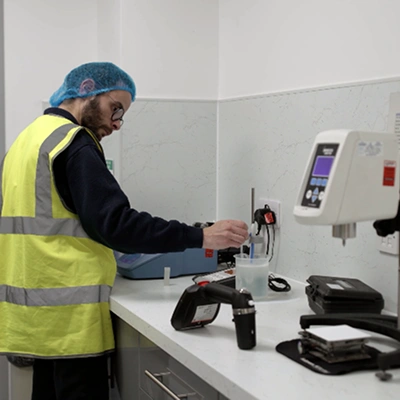
Stay compliant
Digital product passports will soon be mandatory for businesses that sell in the EU. And it’s likely the rest of the world will soon follow suit. So, by adopting DPPs for your products now, you’re getting ahead of the curve.

Customer confidence
Digital product passports are a great way to build trust with consumers. Knowing they can instantly access data on a product’s lifecycle, or instructions on how to care for and repair it, makes them feel like an important part of the process.
Which sectors must use digital product passports?
When this article was written, only the EU has announced timescales for mandatory digital product passports. That means that if you trade any of the following products in EU countries, they must feature DPPs by 2027. Other products will follow, until almost anything sold in the EU has to have a digital product passport by 2033.
Fashion items (including apparel and footwear)
Textiles (including home furnishings)
Batteries
Toys
Key digital product passport dates
If you’re trading in the EU, you need to know what’s happening and when. Here’s a quick guide.
2027
By 2027, all textiles, toys and batteries sold in the EU must have a DPP with the following information. Mandatory data is shown in bold.
Production
- Reference
- Type of process
- Location
- Weight quantity
- Composition material
Transport
- Means
- Distance
Finished product
- Reference
- Composition
- Packaging
- Circular strategy
- Identification type/authentication
Evaluation
- Environmental impact
- Health impact
2030
In 2030, textiles, toys and batteries will need an advanced digital product passport. This includes more information collected along the product’s lifecycle. Like before, mandatory data is shown in bold.
Production
- Reference
- Type of process
- Location
- Weight quantity
- Composition material
- Date
- Traceable assets
- Identification types
- Company tiers
Transport
- Means
- Distance
Finished product
- Reference
- Composition
- Packaging
- Circular strategy
- Description
- Colour
- Size
- Weight
- Company (brand)
- Date
- Quantity
- Identification type/authentication
- Performance
Evaluation
- Environmental impact
- Health impact
- Social impact
- Animal impact
- Quality test
- Certification
- Audits
- Company (evaluation)
- Date
Distribution
- Location
- Second hand
Repair, cleaning, modification
- Type of service
- Date
Collecting/sorting
- Location
- Date
Recycling
- Location
- Date
- Composition
2033
By 2033, all products sold in the EU must have a full circular digital product passport, including all product lifecycle data. Mandatory data is in bold
Production
- Reference
- Type of process
- Location
- Weight quantity
- Composition material
- Date
- Traceable assets
- Identification types
- Company tiers
Transport
- Means
- Distance
- Company
- Date
Finished product
- Reference
- Composition
- Packaging
- Circular strategy
- Description
- Colour
- Size
- Weight
- Company (brand)
- Date
- Quantity
- Identification type/authentication
- Performance
Evaluation
- Environmental impact
- Health impact
- Social impact
- Animal impact
- Quality test
- Certification
- Audits
- Company (evaluation)
- Date
Distribution
- Company (distribution)
- Location
- Second hand
- Purchase dates
- In shop
- Online
Usage
- Usage type
Repair, cleaning, modification
- Company (aftersales)
- Type of service
- Location
- Date
Collecting/sorting
- Reference
- Identification type
- Input
- Type of processes
- Output
- Company (collecting)
- Location
- Date
Recycling
- Type of processes
- Company (recycling)
- Location
- Recycling strategy
- Date
- Composition
Loved by product people, trusted by..











“As a forward-thinking business, we always seek solutions to boost efficiency and ease workloads. A PLM system was the logical choice for managing data in creating a Digital Product Passport. Switching to PLM brought big changes, but our team embraced it because Bombiix provided solutions that fit our processes—and most importantly, they wanted to use it.”
Lucy Gledhill
Founder, Joanie Ltd

Bombiix has been a game-changer for Fimex—it just works with us. In a fast-paced environment where things can get hectic, Bombiix is always there, and a reliable single source of truth for our business.
It’s the perfect tool for our teams across the factory, sales, merchandising, and design, giving everyone seamless access. I’d have no hesitation in recommending Bombiix—it’s an excellent solution that truly supports our workflow.
Caroline Davies
Chief Executive Officer

One word that I would use to describe my experience with Bombiix is fresh. Everything about the system and interface looks fresh and clean, but also the way the system is operated, the human touch. All of that is very fresh for me in the world of PLM. Bombiix is not just a software-driven computer robot system that looks like it’s from 1995.
Michaela Silverman
Design and Buying

” Running a production agency used to be chaos until we found Bombiix. It’s intuitive, tailored to our industry, and backed by a team that truly gets fashion (and isn’t afraid to customise where needed). Finally, a system that speaks our language and a joy to work with, too.”
Fazane Fox
Managing Director
What are the key challenges of adopting digital product passports?
In theory, adopting digital product passports shouldn’t be too hard for most businesses. They should already have the required data, so it’s just a matter of getting it in the right place.
But in practice, things aren’t quite so simple. Many organisations have the data, but it’s not as accessible or as accurate as a DPP needs. Implementing a PLM system like Bombiix is a powerful and efficient way to manage and access data better. The DPP is simply generated (and re-generated) from the data held within the PLM system.
These are some of the main challenges of digital product passports.

Data accuracy and collection
Even simple products can have complex global supply chains, with many different suppliers and producers. This can make it difficult to gather, verify and standardise the data needed for a DPP. A PLM system can make the process much more efficient.

Data privacy
Digital product passports need a lot of data, some of which is sensitive. That means a potential risk of unauthorised access, and cyberattack.
Using a DPP system like Bombiix helps with these risks by providing robust security and customisable access levels. It also integrates seamlessly and closely with Bombiix’s PLM, which helps minimise the chance of data leaks.

High implementation and running costs
Setting up a digital product passport system is expensive. Running it is expensive too, and as more products are added, the cost increases. Using an existing digital passport system like Bombiix reduces development time and cost, and helps businesses stay compliant.

Standardisation and compliance
At the moment, there are no universally adopted standards for digital product passport structure and format. So as regulations develop, this could result in DPPs that are inaccessible. As more technologies are integrated with DPPs, this problem will get worse. Using an existing DPP solution like Bombiix, which evolves with new standards, helps avoid this problem.
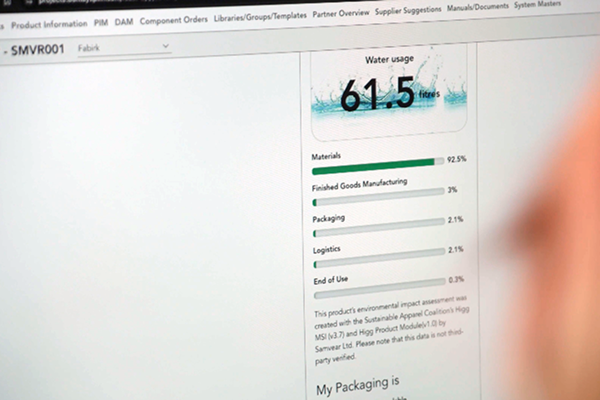
Stakeholder coordination
Capturing data from every stage of the supply chain can be hard. Using an integrated PLM and DPP, like Bombiix provides, can make it much simpler. Suppliers all over the world can easily collaborate on the Bombiix PLM, saving time and improving data accuracy.
Conclusion
Digital product passports are going to change how we interact with products. They could significantly reduce waste, and help move towards a more sustainable circular economy.
While the EU is leading digital product passports charge, other areas are likely to follow in their example soon. So if your business trades in the EU or globally, it’s important to start implementing your digital product passport plan now, to give yourself plenty of time to be compliant.
If you don’t already have a PLM system in place, then investing in an integrated PLM and DPP system like Bombiix could save you significant time and money in the future.

Try our DPP software
For the same amount of money it costs to hire an entry-level employee for manual DPP creation, Bombiix automates the entire process for you and acts as a digital assistant for your entire team.
DPP FAQs
Below, we answer some of the most often asked questions about Digital Product Passports
Why are Digital Product Passports (DPP) important for sustainability?
DPPs help businesses and consumers make more sustainable choices by providing detailed information about a product’s materials, lifecycle, and environmental impact. Product passports champion transparency and support recycling, reuse, and responsible consumption.
How do Digital Product Passports support circular economy practices?
Circular economy practices are supported by DPPs as they track a product’s entire lifecycle, from raw materials to manufacturing, use and end-of-life processes. With this information, businesses can manage resources more effectively and promote the reuse, recycling and refurbishment of products, helping to reduce waste.
What kind of information is stored in a Digital Product Passport?
DPPs store data like the product’s origin, materials, manufacturing processes, certifications, repair instructions and recycling guidelines. They may also include details about warranties, maintenance records and compliance with environmental regulations.
How do DPPs help consumers make informed purchasing decisions?
Providing insights into a product’s environmental footprint, origin and quality standards, DPPs allow consumers to make informed decisions about what they buy, such as supporting ethical sourcing or reducing carbon emissions.
What role do DPPs play in supply chain transparency?
Product passports play a key role in supply chain transparency, offering a digital record of a product’s journey through the supply chain. This transparency helps build trust between brands and their customers.
How can Digital Product Passports help with product recalls?
DPPs make it easier to trace and identify products that need to be recalled. By having detailed information on production batches and materials, brands can act quickly and accurately to notify customers and address safety concerns.
Are Digital Product Passports required by any regulations or standards?
In some regions, particularly the European Union, DPPs are becoming increasingly important for meeting regulations related to sustainability and product traceability. For example, from 2027 DPPs will be mandatory for textiles, fashion, batteries and toys.
What industries are leading in the adoption of Digital Product Passports?
Industries like electronics, automotive, fashion and consumer goods are early adopters, driven by the need for transparency and sustainability. Sectors that deal with complex supply chains and high environmental impact are especially invested in DPP adoption.
How do DPPs interact with technologies like blockchain for data integrity?
Blockchain can provide a secure and immutable record for DPP data, ensuring that information is accurate and cannot be tampered with. This is especially useful for verifying the authenticity of information regarding product origin, materials and certifications.